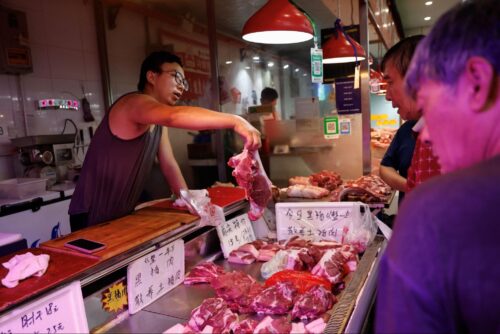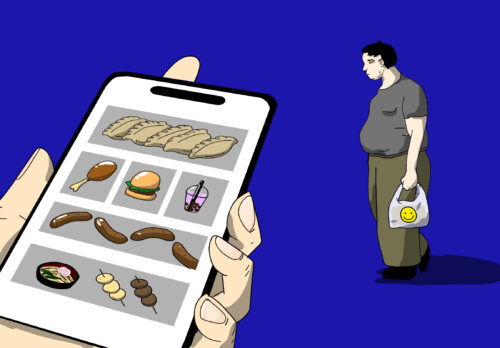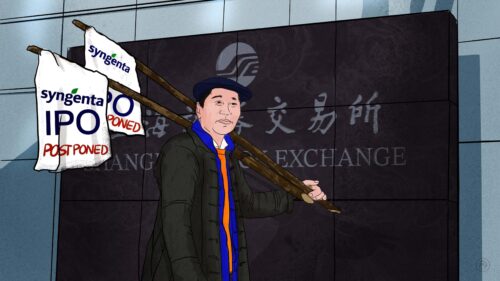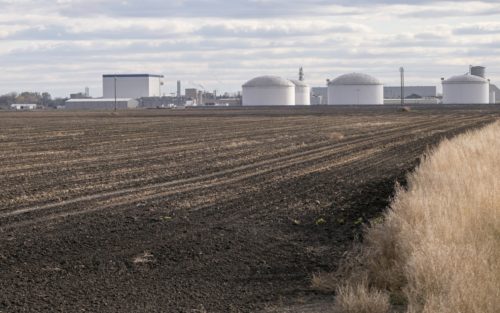China’s pig market finally emerges from a long winter, but for some producers, it was too long
China’s hog market finally turned around in March after many months of steep losses in the industry, but it has been a long slog for the pig producers, especially Zhengbang (and its pigs).

After reaching a record low of 10.5 yuan/kilogram ($2.55/2.2 lbs) in early October last year, the price of live pigs in China finally turned around in March and April this year:
- The average price of live pigs increased from 12.13 yuan/kilogram ($1.79/2.2 lbs) in March to 23.24 yuan/kilogram ($3.44/2.2 lbs) on July 15, an increase of 91.59%.
- As of July 25, the price of live pigs was 22.42 yuan/kilogram ($3.31/2.2 lbs), a year-on-year increase of 42.98% and a month-on-month increase of 24.83%.
- According to the Ministry of Agriculture and Rural Affairs, the average price of pork (closely related to the price of live pigs) in the wholesale market was 30.05 yuan/kilogram ($4.44/2.2 lbs) on July 21, a year-on-year increase of 36.2% and an increase of 66.7% from March 31.
According to one observer, the rise in pig prices occurred after the recent reopening of schools, factories, and restaurants, which caused an increase in pork consumption, coupled with a decrease in imports and slaughtering of pigs. But for Jiangxi Zhengbang Technology 正邦科技, one of the giants of China’s pig industry, the change came much too late. Zhengbang made the mistake of preempting the rise in the market, vastly increasing the amount of slaughtered pigs in 2019 and 2020 (when it slaughtered 9.55 million pigs), which contributed to the prolonged drop in prices.
Over the last few months, the crisis at Zhengbang came to a head. Last week, Zhengbang was caught in a controversy when it was revealed that, since May, the company did not provide pig feed to its farmers on time, causing the farmers’ pigs to starve to death. Some farmers told the media that it was no use asking Zhengbang for help, and they didn’t want to use their own funds to feed the pigs, as this would never be refunded, so the pigs were left to starve. The company responded to the media by saying that due to the long downturn in the pig market, “funds were tight.” Over the weekend, journalists also found that Zhengbang was unable to pay its logistics costs, and many of its employees have recently not been paid, either.
Indeed, according to the company’s performance forecast, Zhengbang expects net losses of up to 4.6 billion yuan ($681.12 million) in the first half of the year, which would be an increase of 221% compared with the 1.43 billion yuan ($211.74 million) it lost in the same period last year.
Zhengbang makes use of the traditional cooperative farming model in which the company provides the piglets and feed, while it contracts farmers to provide the facilities and labor (as opposed to large-scale industrialized farming undertaken by the company itself). The advantage of the cooperative model is that it facilitates rapid expansion, but when things go wrong, they can spiral out of control quickly. Instead of increasing production, the company is now reducing production: In the first half of the year, its cumulative sales totaled 4.84 million live pigs, a year-on-year decrease of 30.75%. The company’s stock price has fallen by 40% since the beginning of the year.
The context
Zhengbang is not the only company going through hard times: All of China’s major producers have suffered during the long pig industry winter. Of the 20 listed hog companies that have released performance forecasts for the first half of the year, only five were profitable (and mostly only because they are diversified in other industries), and only two expect to see a rise in profits. The other 15 lost a lot of money. For example:
- Muyuan Foods 牧原食品股份, often described as the “pig industry Moutai,” expects net losses of up to 6.9 billion yuan ($1.02 billion), a year-on-year decrease of 172.43%.
- New Hope Group 新希望集团, which is one of China’s most established and successful agricultural companies, expects to lose up to 4.2 billion yuan ($621.89 million), a year-on-year decrease of 22.98%.
With prices finally rising again, most pig producers are trying their best to make up for lost ground:
- In June, Muyuan Foods sold 5.27 million live pigs, a year-on-year increase of 51.9%, for pig sales revenue of 8.75 billion yuan ($1.29 billion), a year-on-year increase of 53.4%.
- New Hope Group sold 979,200 live pigs, a year-on-year increase of 51.51%, for revenue of 1.76 billion yuan ($261.34 million), a year-on-year increase of 62.67%.
But Zhengbang is still treading water: In June, the company sold 750,800 live pigs, a small month-on-month increase but a year-on-year decrease of 52.64%, for revenue of 662 million yuan ($98.02 million), a year-on-year decrease of 78.30%.
The prolonged decrease in the price of pork was an important factor in dissipating inflationary pressures: In the first half of the year, food prices as a whole decreased by 0.4%, which kept the Consumer Price Index (CPI) from rising. But in the second half of the year, rising pork prices will pose an inflationary risk. In February, the price of grain also entered a new cycle of rising prices, and the prices of fertilizer and diesel have likewise increased this year.
For now, government officials consider the inflationary risk as manageable, but food prices are expected to fluctuate greatly in the second half of the year with COVID outbreaks, wars, supply chain disruptions, trade restrictions, and abnormal weather. The risk of inflation may increase significantly, but for now, pork consumption and pig prices in China are recovering, not overheating.
The takeaway
China’s pig market has entered an upward cycle, which is good news for the long-suffering pig producers, but has implications for rising food prices and inflationary pressures.






